 Burroughs B7800
Mainframe
Burroughs B7800
Mainframe
abstract: Burroughs large systems memorabilia, B7800 parts
author: Ralph Klimek
date: Mon Apr 7 18:05:00 EST 2008
copyright:
this article is copyleft, no rights are reserved, logos , trade
marks, however, clearly still belong to their respective owners
My involvement with Burroughs and the mainframe worlds was from late
1985 through to 1990 when by employer ended its usage of large
mainframe systems and replaced it with various minicomputers and
migrated the legacy databases. There I labored under the steady and true gaze of the
great Mr Bruce A. Seaman one of natures gentlemen and the greatest
engineering manager that I
have had the privilege to work for.
In that time I performed engineering maintenance functions on the
mainframe and its peripherals. Sadly very little of it remains, no
documents from that time have survived and only a few relics and only
one museum piece remains from that era. This was well before
the days of the web, near infinite disk storage and digital cameras ,
so all thats left are rapidly fading memories.
I have come to believe that Monash University may have been the
only organization on the planet that did total hardware maintenance of
it Burroughs Large Systems completely in house. I wonder how true
this actually is ? Were there others ?
|
This piece of the right hand portion of the front panel from a
Burroughs B7800 CPM (central processing module) now decorates my garage
door where it awes my enemies and impresses my friends. |
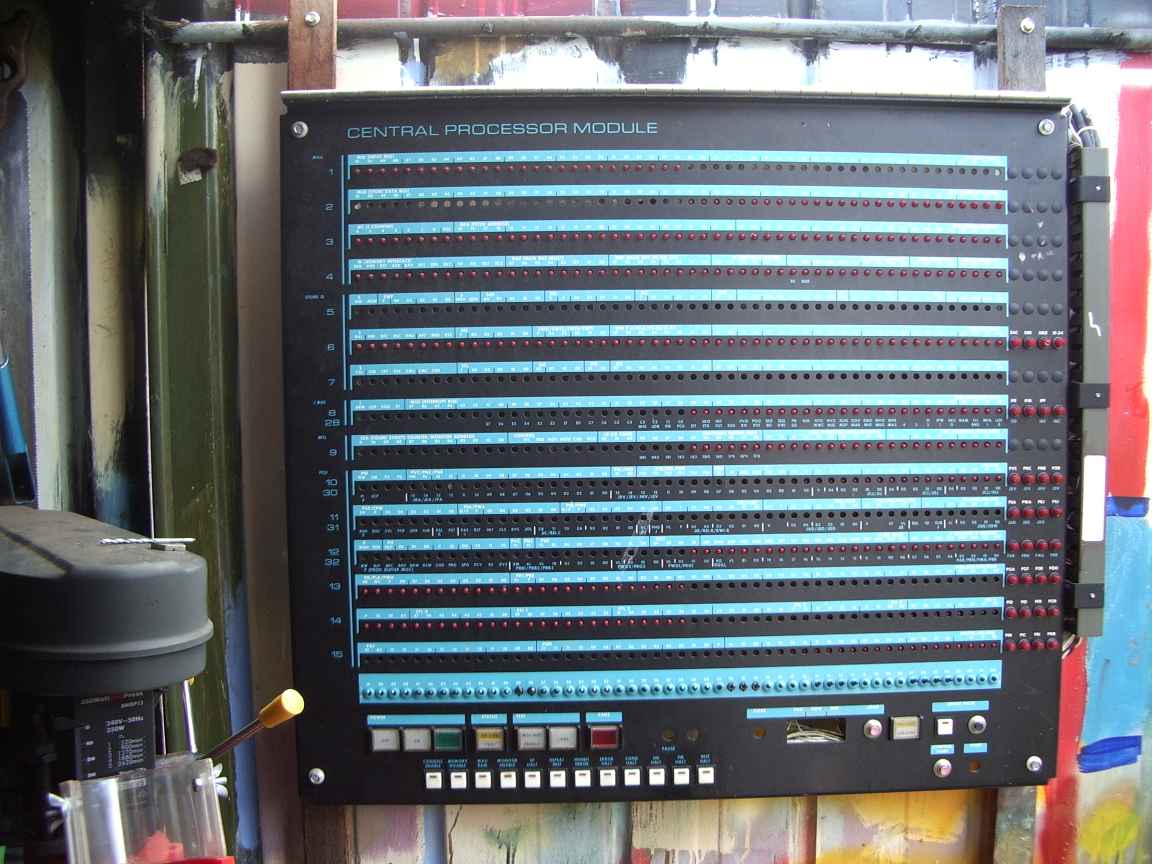 |
My souvenier of the
Burroughs B7800
CPM. In this design, every register and flip flop was brought out to
the front panel. Each LED had about 16 different meanings depending on
the switch settings. The display was allways on and looked magnificent.
You would walk amongst rows of these panels, it was like the imagined
space ship main battle station of the Death Star. It was a
great
crowd pleaser at open days and I am sure that this display made the job
of Burroughs salesmen so much easier. As an engineering tool, it was
usefull but not essential. We had a B800 mini computer whose only job
was to read the front panel and tell us that led 27, row18, panel 2 was
off. We would walk around and sure enough the led was in the wrong
state. Very powerful, wise and all knowing it made us engineers feel!
|
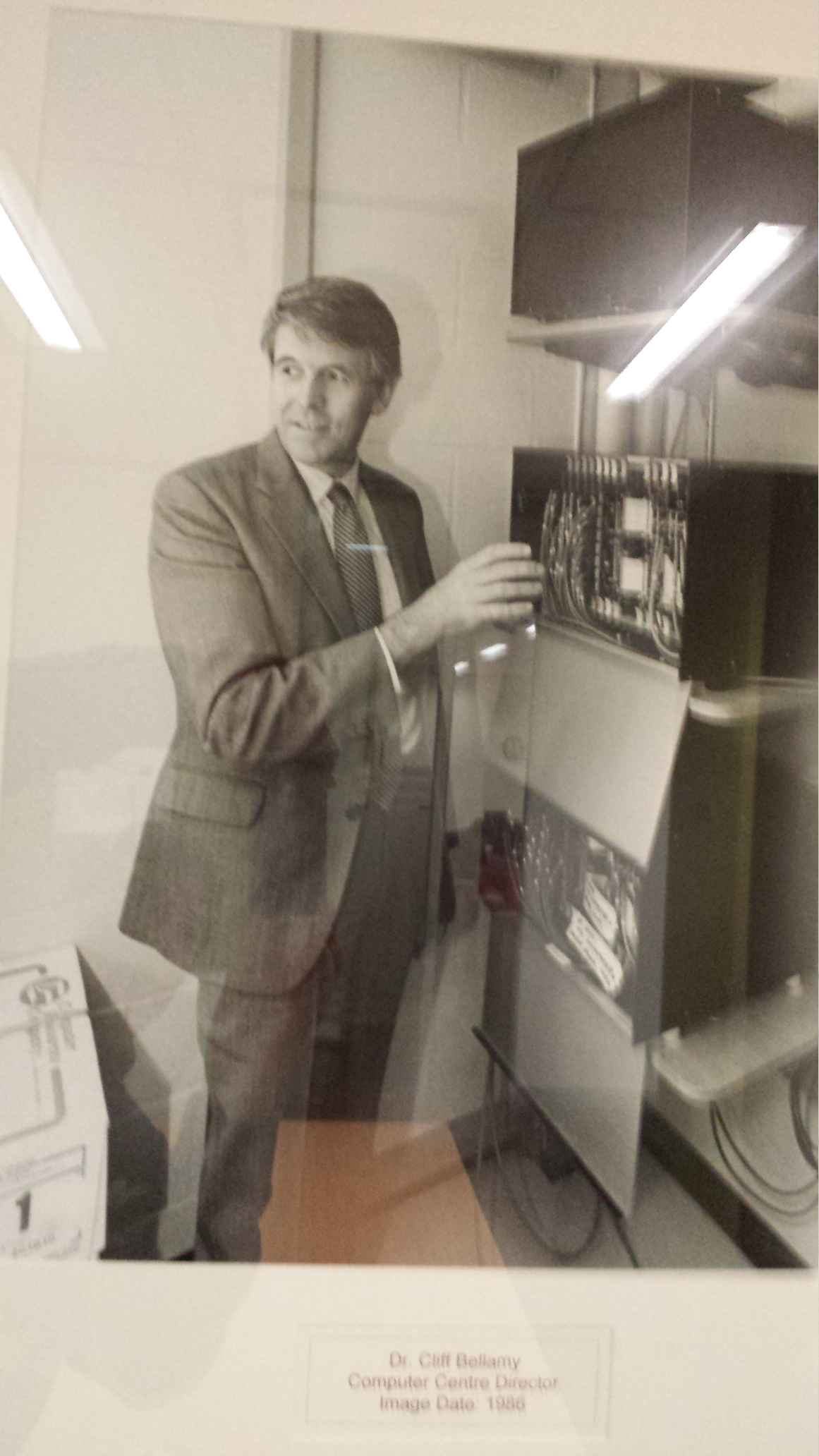 |
This is an image of the late Dr. Clifford Bellamy Computer Centre Director Monash University
This
was our Director and my Boss's Boss. Dr. Bellamy was
the driving force behind many totally remarkable and courageous
initiatives that put Monash University in a very enviable global
position in the 1980s. He directed the existence of projects that
were completely from "left field" and would have left other
erudite institutions gasping in disbelief. It was his direction
and faith in the capability and motivation of his staff that we were
able to do what few institutions were able to do successfully, which in
my sphere was the complete maintenance of a very large third generation
mainframe computer in house .
It was not just the Burroughs either. The engineering team,
as lead by my Boss, Mr. Bruce Seaman , also did complete
inhouse maintenance of a large fleet of VAX780 "super"-mini computers,
a large fleet of Pyramid 90X unix minicomputers and all attending
peripherals. Dr Bellamy also conceived of the the "Monet" local
area networking system which the image shows him displaying.
"Monet"
was a fantastic mechanism for the transport of serial terminal
lines. In the era of the dumb green screen terminal or which Monash had
thousands distributed throughout the large clayton campus,
it was not physically possible to distribute RS232 lines throught
our square kilometer campus. Monet was a networked terminal line
concentrator system that had local nodes that gathered terminal data
lines and put the data, without loss, onto custom 2M/bit/s
balanced data CD/MA buses that spanned the campus. This was
turned into a successfull commercial products by RACAL. Monet also led
to the creation , in house of a complex UNIBUS
processor card that plugged into a VAX780 that demultiplexed hundreds
of serial lines directly into the VAX. Custom VMS drivers were
also
written to do this.
One of the totally remarkable projects he
started was the creation , in house, of expanded memory cards for the
VAX780. We took standard memory cards that were fitted with 16k-x-1
dynamic ram chips put in 256k-x-1 chips. This also required
considerable modifications to the memory cards and rewiring of the
VAX780 backplane. It was a change that when started , could not be
backed out. It also had the result that now our VAXes could NO LONGER
be maintained by DEC. Could you imagine contemplating something
like this is this day and age? In those days a 1 megabyte memory
card would have sold for $30000.
The result of his unique in
house initiatives was that Monash had a fleet of computing resources
that was at least one order of magnitude larger than our competing
tertiary institutions, yet we had comparable budgets.
In my pantheon of personal heroes, Dr Bellamy occupies a special place.
|
| My special thank you to Mr Jeff Perry who sent me this scan of a marketing slide showing the B7800 hardware |
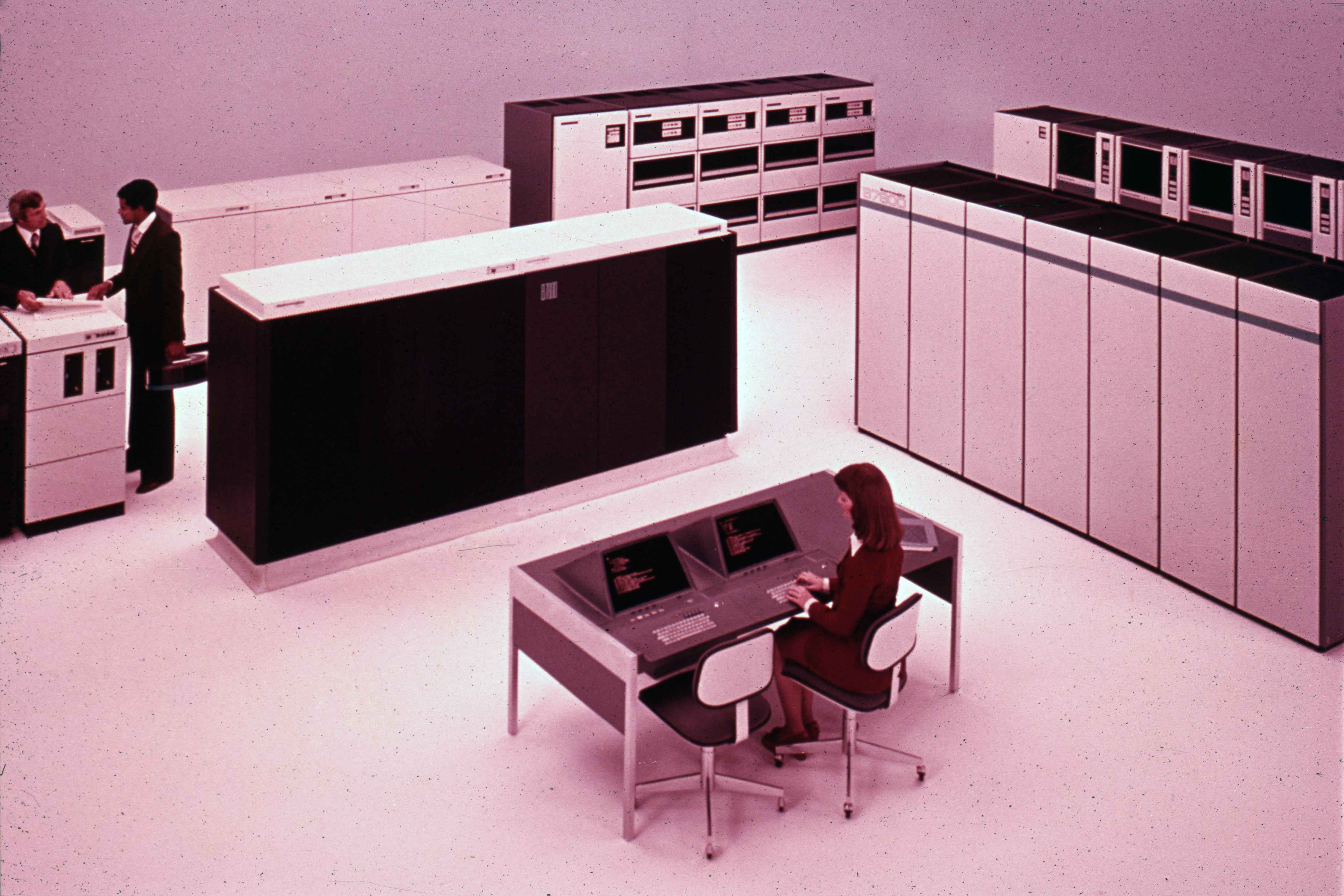 |
| The Burrough's B-Line an in house journal from the early sixties. This is pioneering computing at its best |
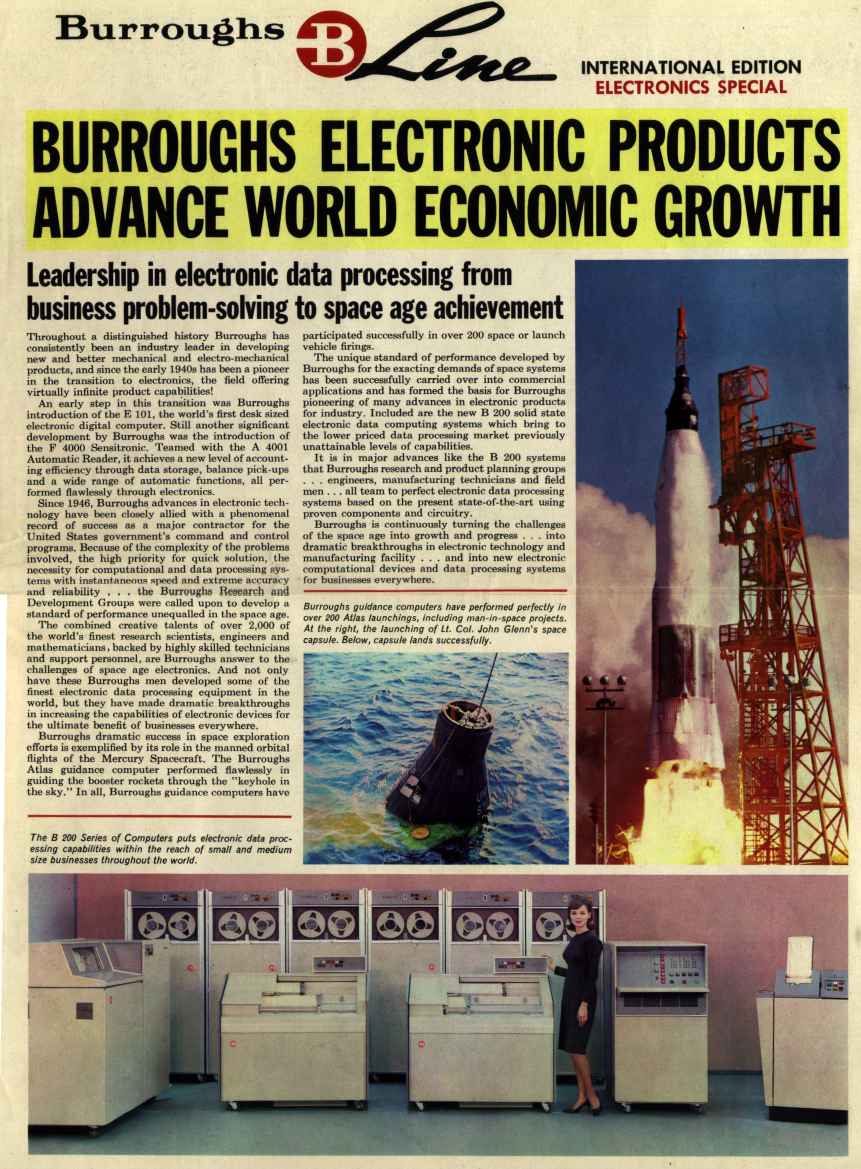
click me to read the entire edition |
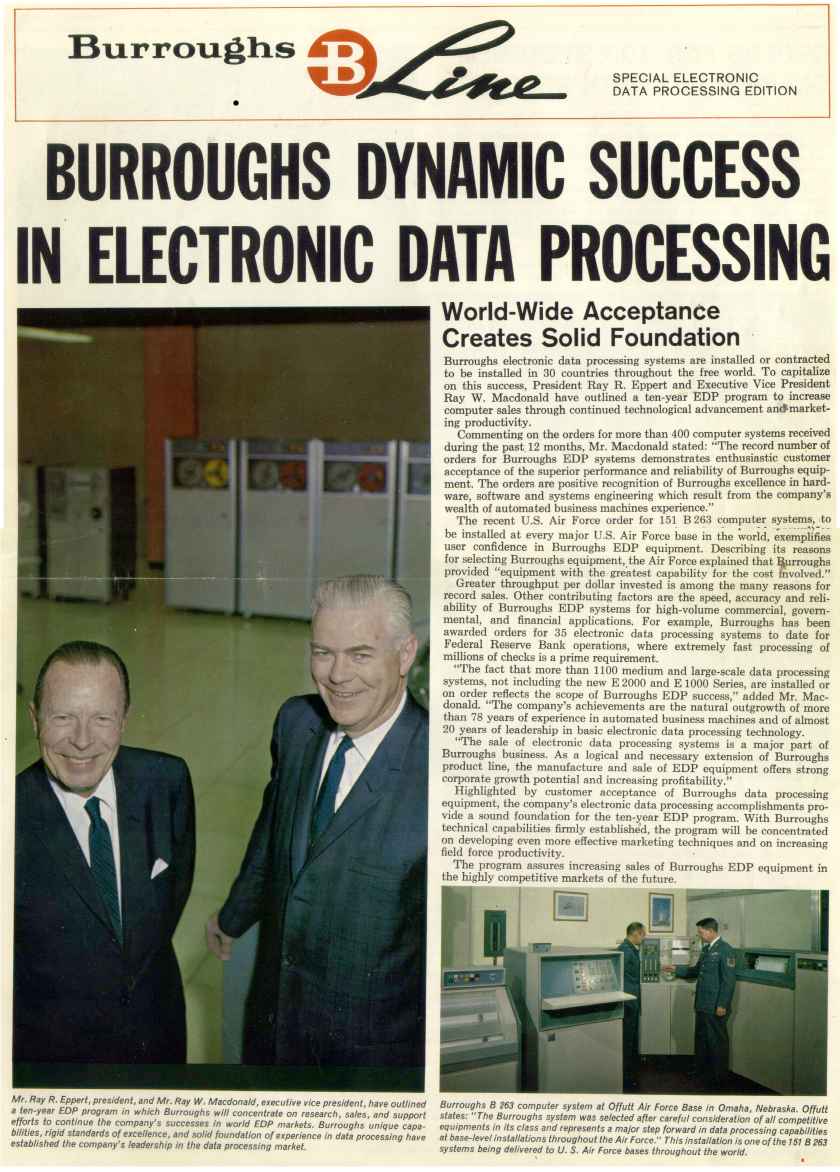 |
| an earlier edition of the Burroughs B Line |
The smaller left hand panel of the Burrough B7800 IOM, the Input Output
Module was a standalone processor that handled all interactions with
the peripherals; disk, tape, printers, TTYs
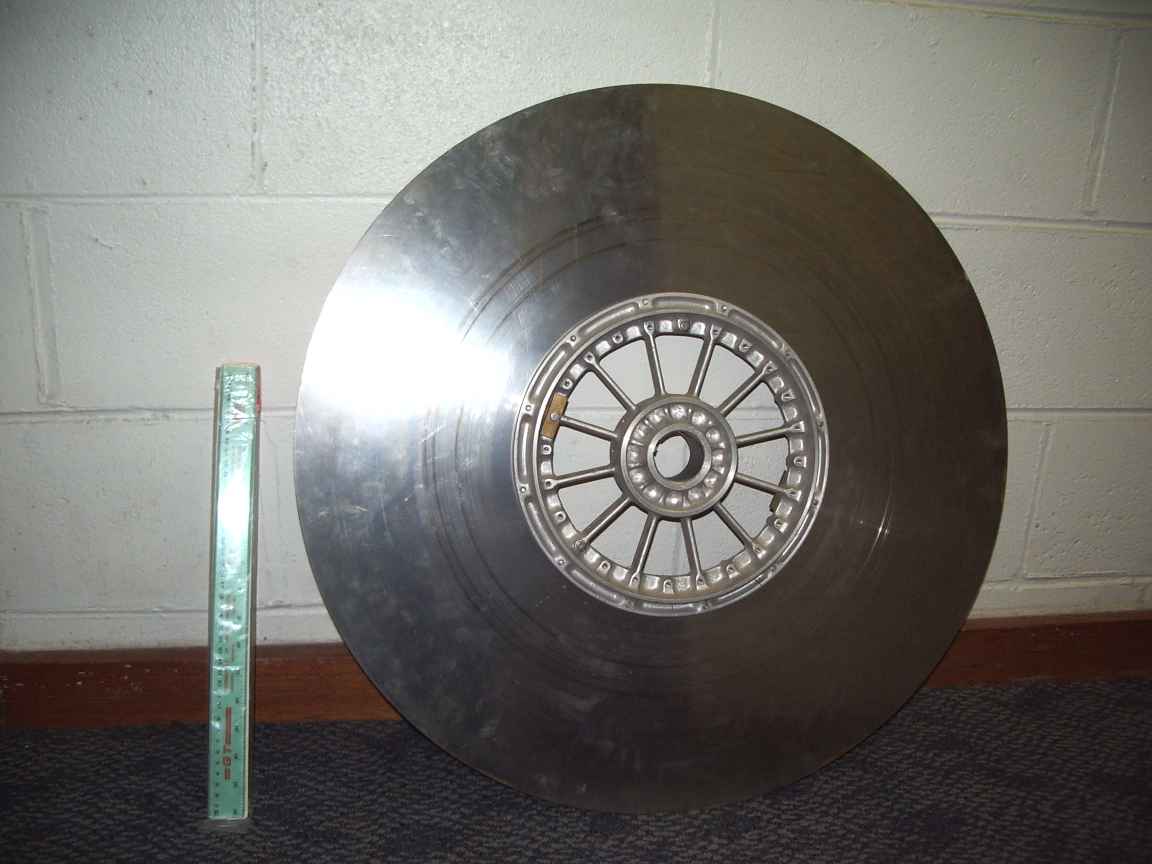 | 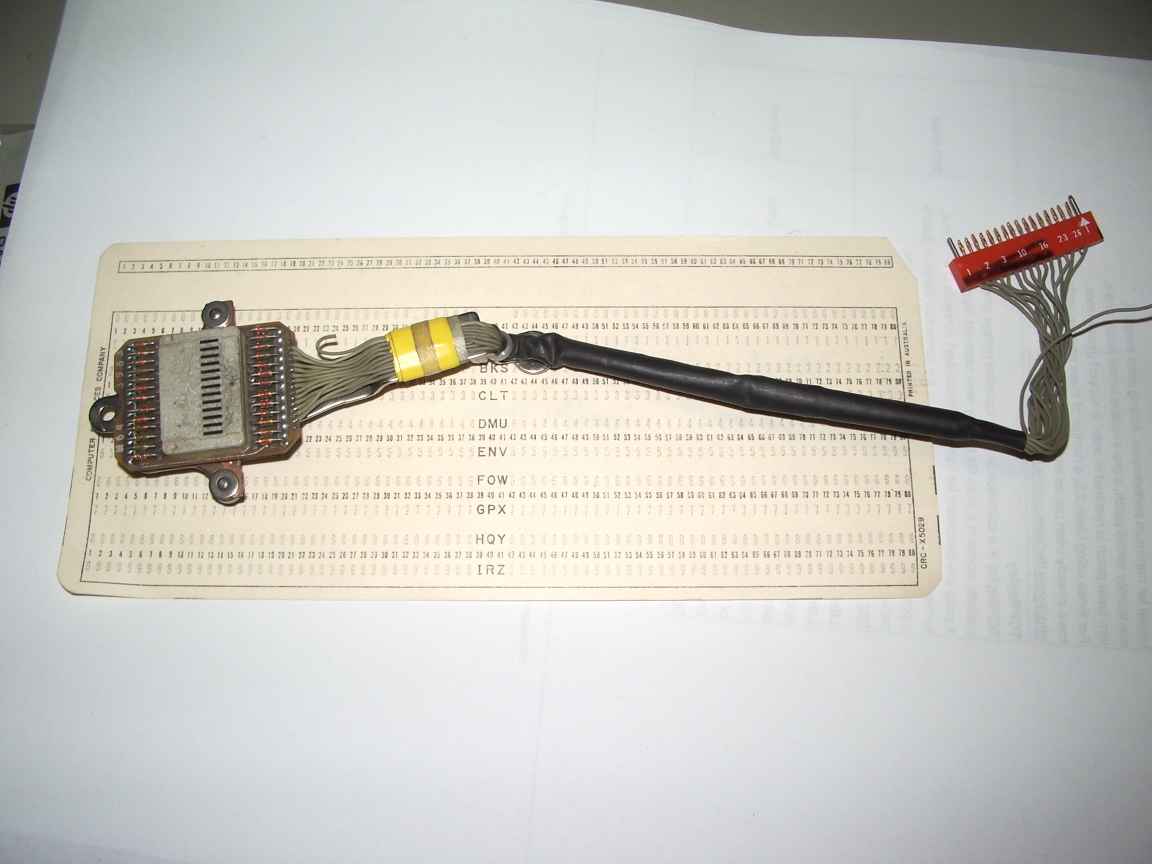 |
|
This is a head assembly of the head per track disk right (see images in The B-line) The
ruler is a 15 inch | One disk from a
Burroughs "DISK"
controller as distinct from "PACK" The "DISK" was this massive one head
per track monster. Total capacity was only 5Megabytes but was damned
fast because there was no seek delay. On this was implemented some of
the industries very first effective virtual memory, as this monster was
still cheaper than core or the new fangled solid state memory. |
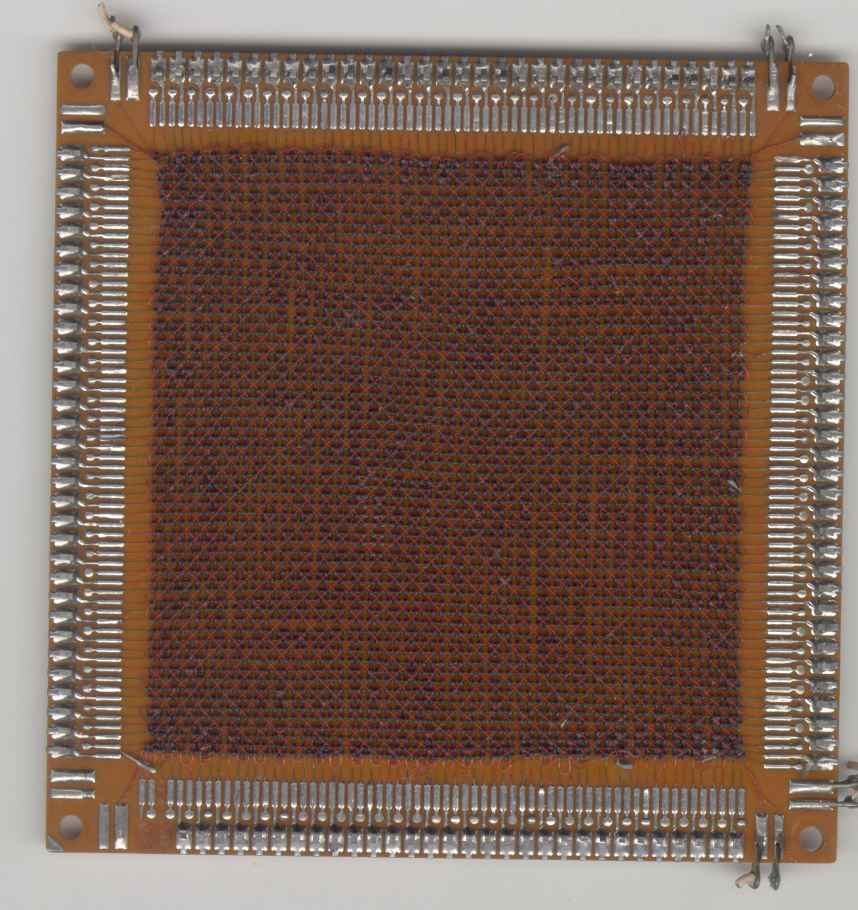 |
The
above image shows a plane of B5500 magnetic core memory, image courtesy
of Mr Alan Thorne who actually used it ! See the irregular spacing of
the rather large toroids, for this core plane was hand threaded. The
higher density core plane, elsewhere was machine threaded and is more
regular.
These core planes were made in Hong Kong,
presumeably by the poor folks that had escaped from communist China and
would do this highly detailed and tedious work for nothing more than a
beating, a handfull of rice and a vague promise that things might get
better. Click on this image to get the full resolution. |
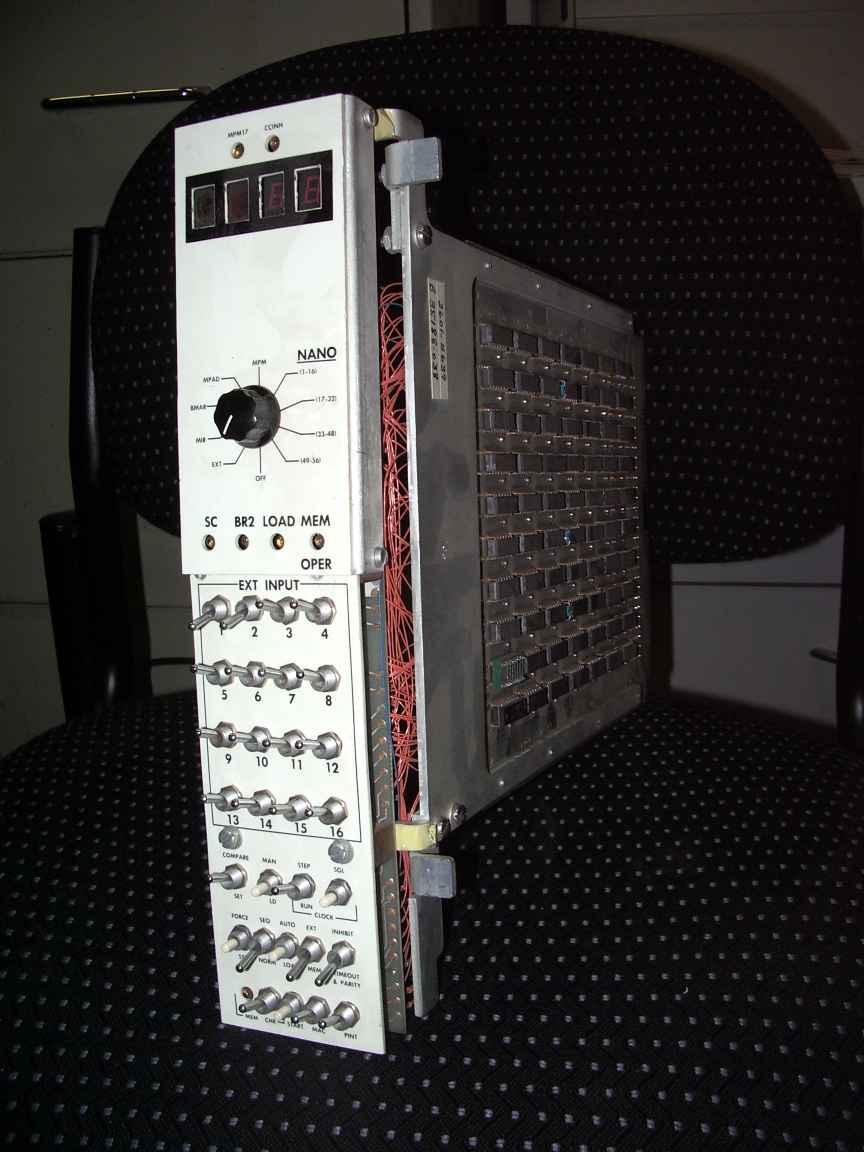 |
| The
console from a
Burroughs Disk
Pack Driver Controller. There were two redundant controllers in every
B350 controller cabinet. The controller was a B700 minicomputer in its
own right. The console could be inserted and removed while online. It
was removed to discourage "ge-finger-poken". I used these
regularily to perform disk pack maintenance after a special controller
program had been loaded either online or from a Kansas City standard
cassette. There was a hard wired writable control store ram diagnostic
in this device. This console permitted complete control of a string of
8 disk drive cabinets including the ability of writing arbitary data
over your production disk packs. We were very very very very carefull ! |
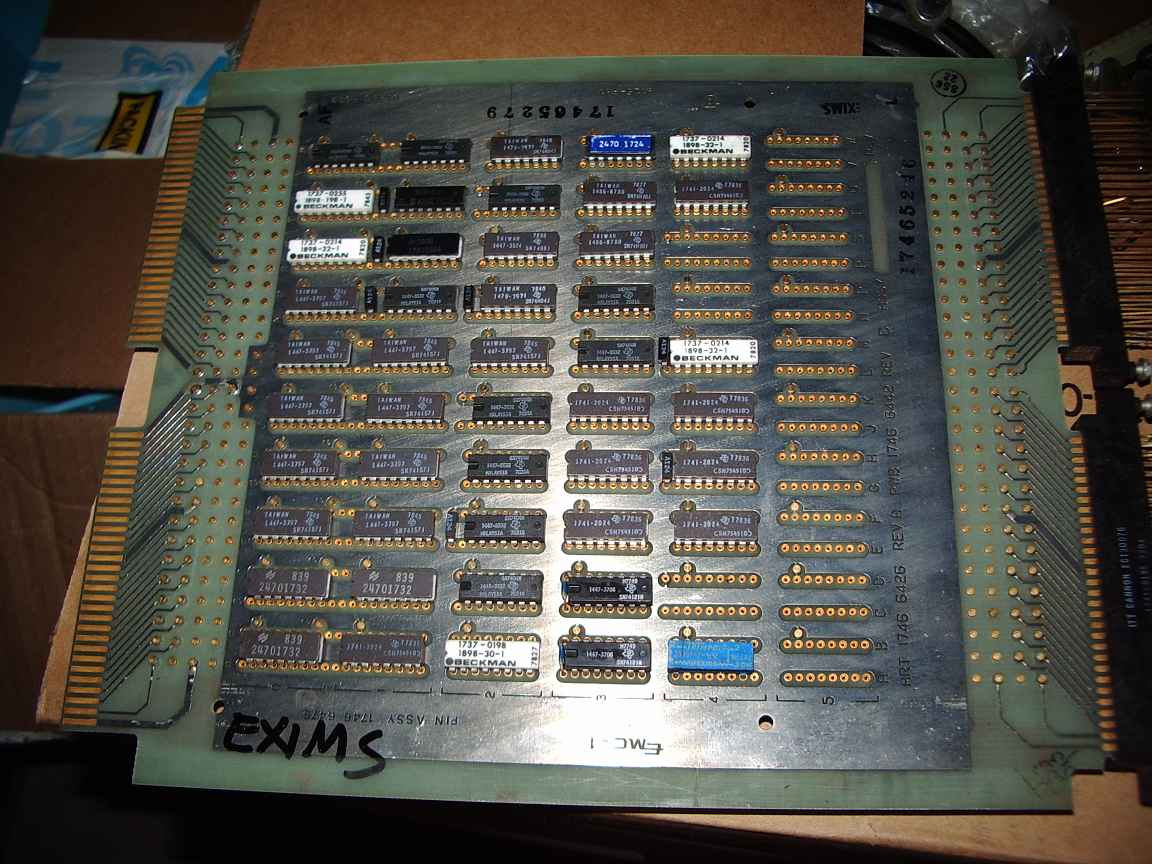 | 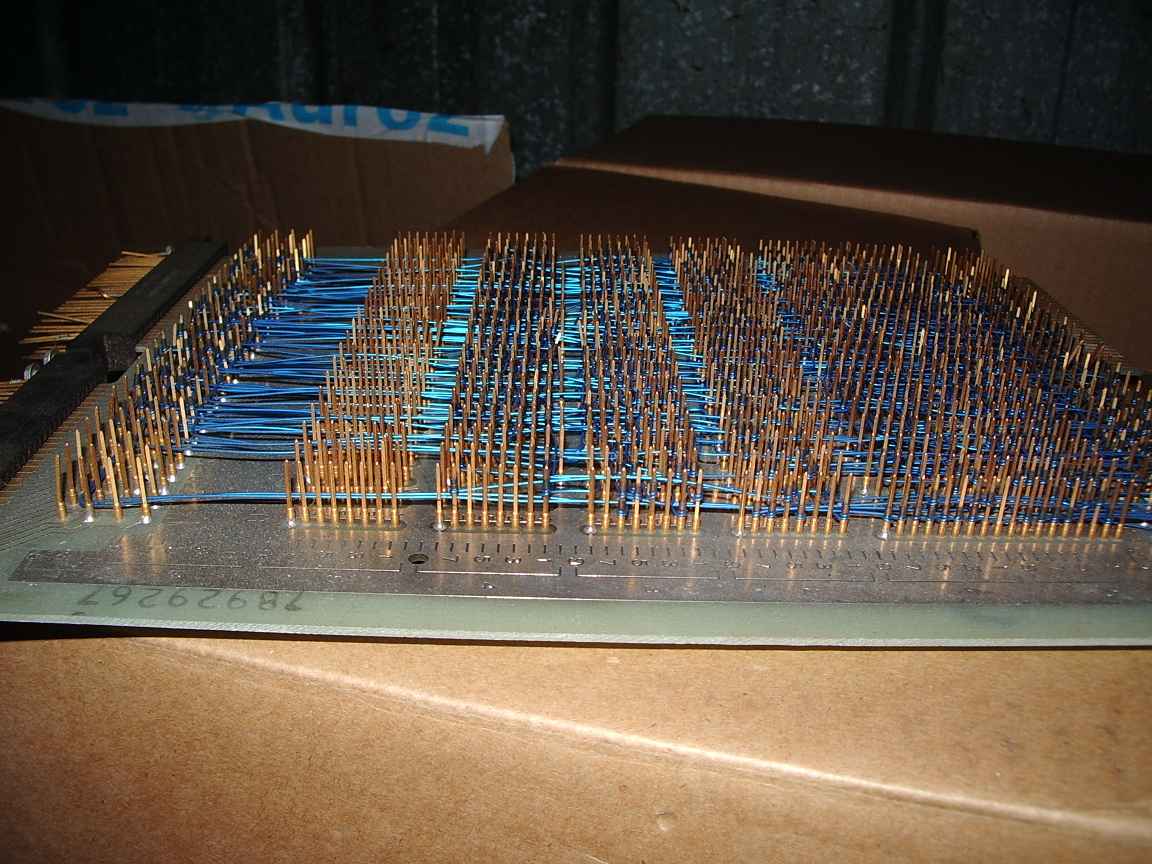 |
| Gleaming
boards from the BX350 disk pack drive controller. All that
glitters is sometimes actually gold! The view into a full card cage of these was
like looking into Aladin's cave. |
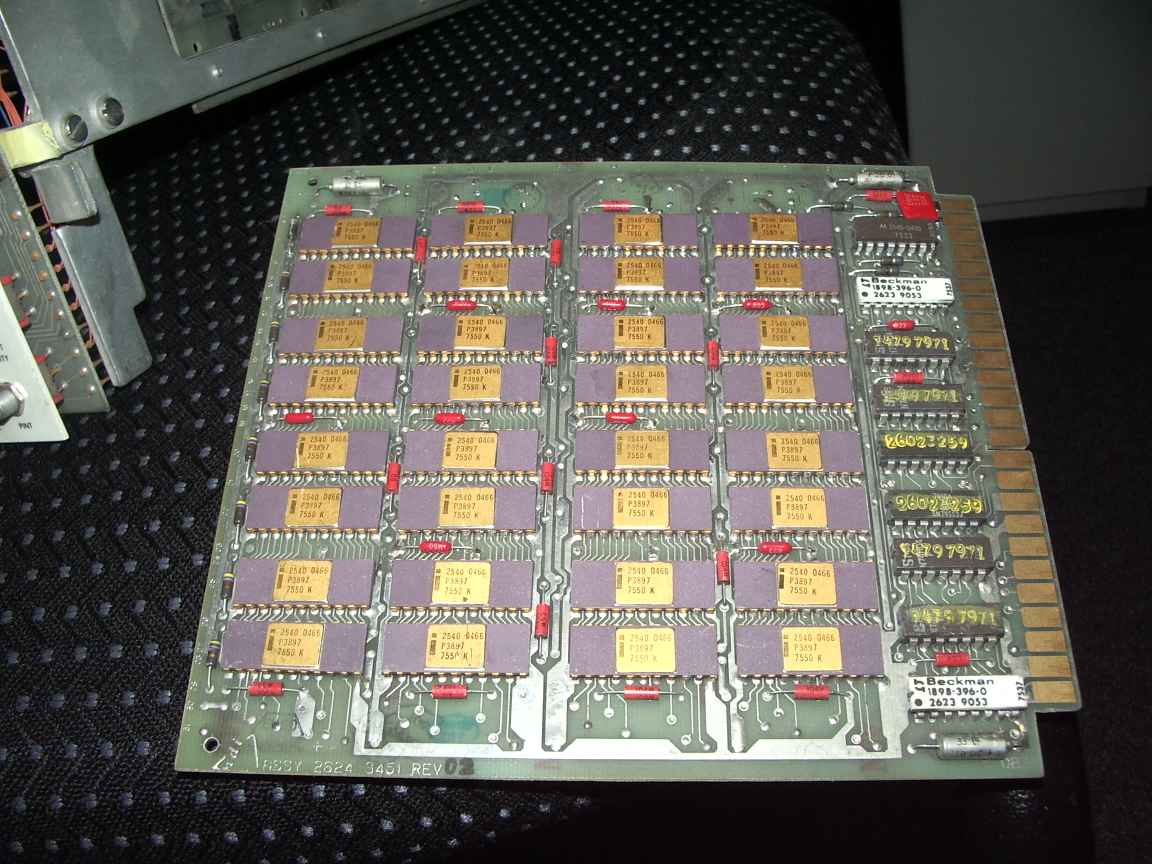 |
This card was one of about a thousand that came from the memory
cabinets. The memory chips are intel 4kbits by 1 .
Our
Burroughs was maxed out with 8 Megabytes. The Burroughs had
very
good ECC and could tolerate a small number faulty chips. We spent a
good portion of our time replacing many of these rather forgetfull
memories.
|
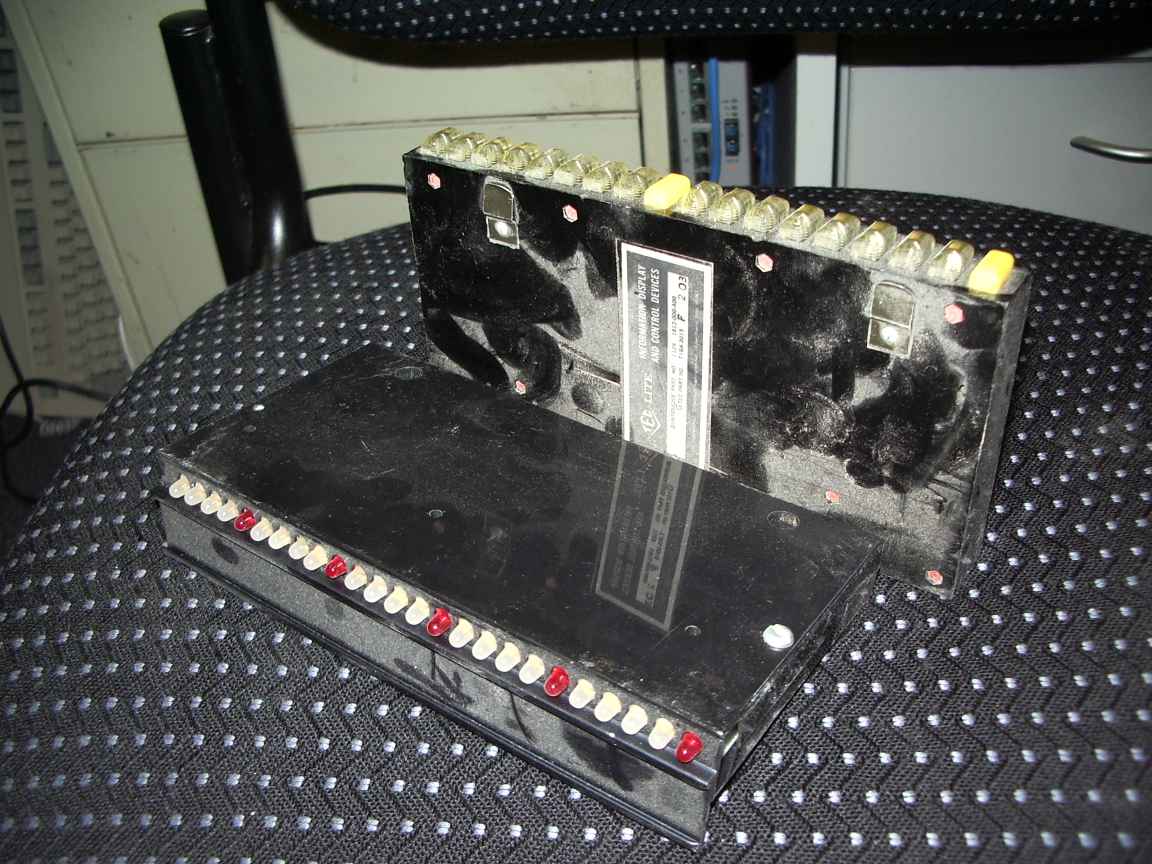 |
Engineering Display cards. These would be clamped onto edge connectors
and you slided a lable into the label holder which told you what the
lights meant for that particular card. In the B7800 they were used only
on the Peripheral Control Cabinets
|
Core memory plane from a Burroughs DCP, one of about 20 such boards in
every DCP
click and zoom in on this
image
A PCC cabinet line driver interface card
Console card from the
B800 maintenance processor
A view of the Burrough
B7800
mainframe and backplane. The backplane was a robot wire wrapped marvel
and maintenance nightmare. All done with twisted pair wire, all colored
alike. We we had to perform modifications ( hardware patching! none of
this download new firmware nonsense) we used yellow wire wrap wire to
help remind ourselves where and what we had done. Wire wraps could be
up to four levels deep. Dead wires were left in place because it was
impossible to disentangle them. Worst faults were intermittant ones
whereby insulation would be cut through by adjacent sharp wire wrap
pins. The small floating PCBs are clock distribution modules.
The awesome backplane. Source of many intermittant faults and surely
the last word in heroic complexity.
Detail from above. The dust dates from 1989 when this machine
was
powered down for the last time. This is a clock distribution board, not
a delay line as many erroneously thought. Some of those wires are mine.
Some views of the PSU There were about 40 of these in each
mainframe cabinet. They took a raw DC input of 120Volts and a
pioneering switchmode power regulator transformed it to 4.8V or -2.0V.
The two coils visible here are current shunts for automatic short
circuit constant current mode running. You cannot parallel voltage
sources, they must have some resistance and coils of bronze resistance wire
provided it.
The primary DC supply was derived from switched SCR rectifiers that
were directly connected to large 3 phase step down transformers and
these were direct on line. Everytime the lights blinked we
moaned
to ourselves about our fates and attended to repair 3 or 4 of these
units when the output transistors had been popped by a surge or other
transient. We became very good at replacing power transistors in a
hurry. A tripped breaker at the front told us the unwelcome news. Often
the machine would continue to run with up to six dead PSUs. |
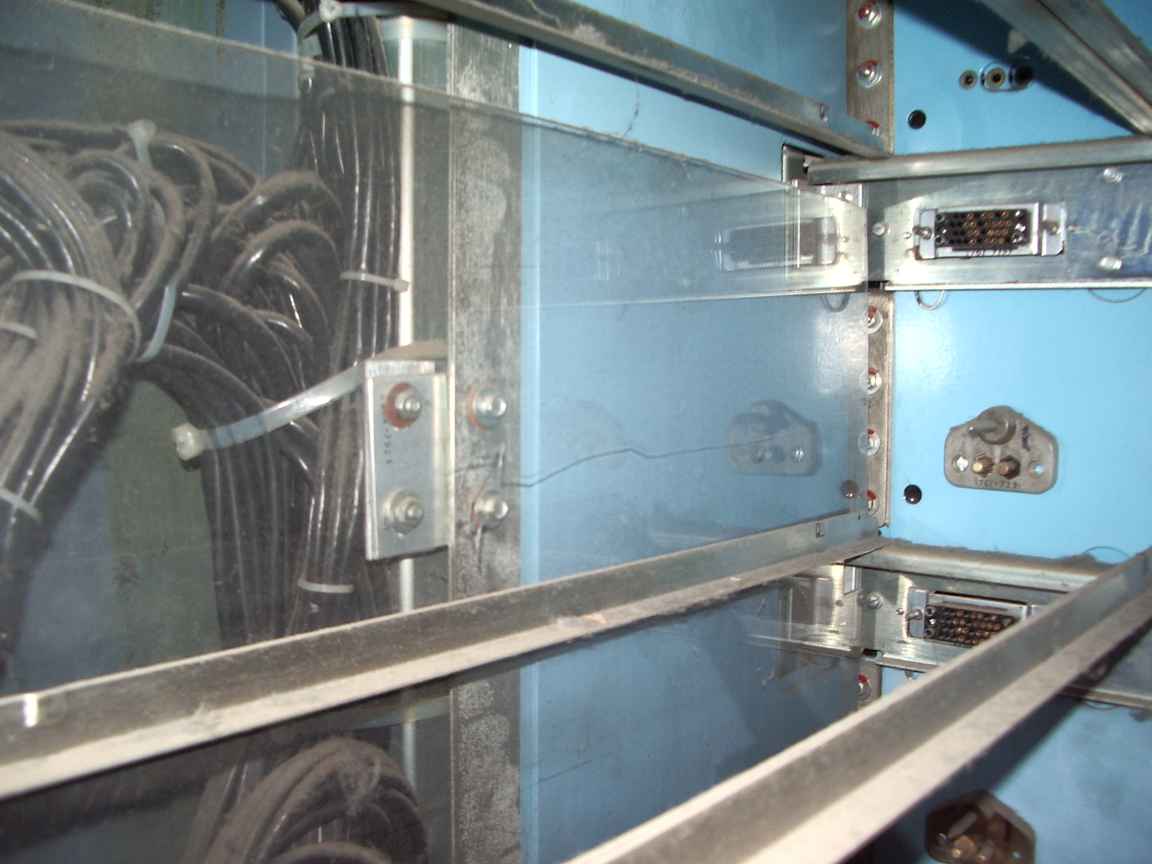 | 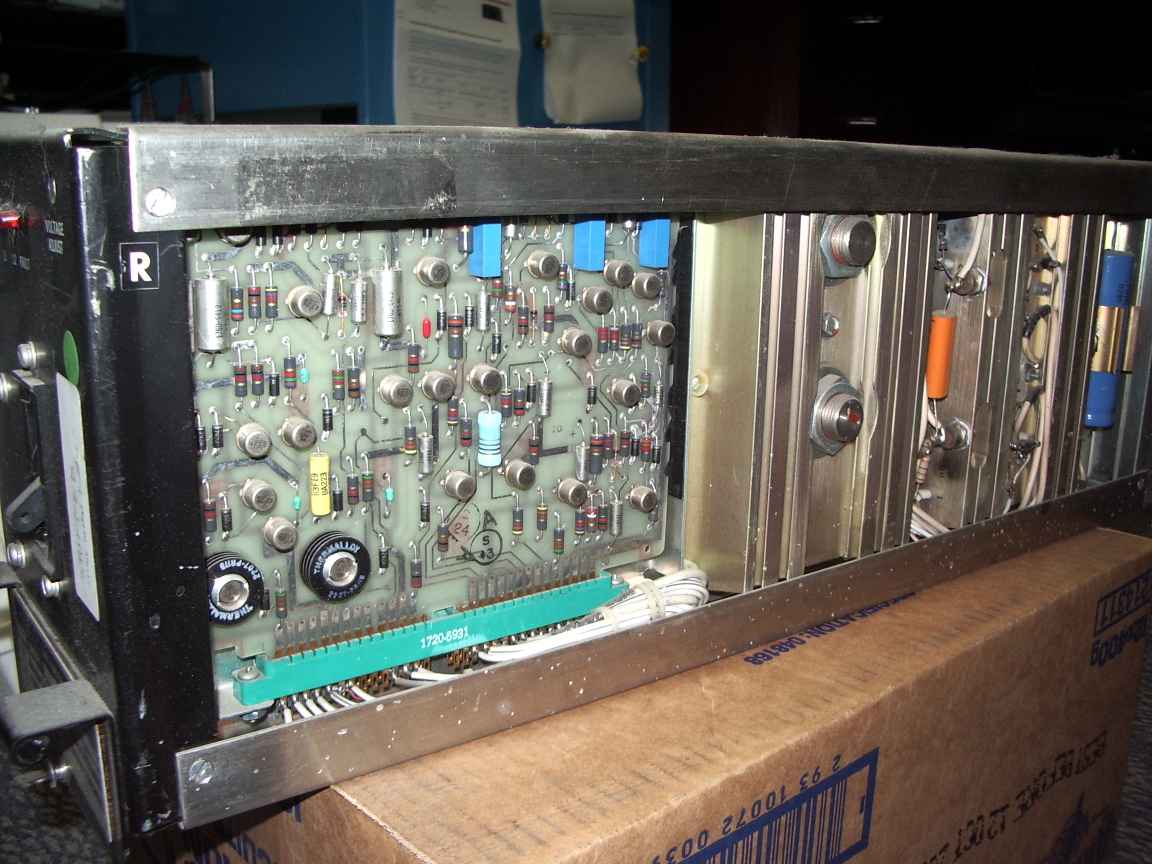 |
The many power supplies sat in these racks at the top of the machine,
behind the front display panels.
The blue sheets are solid aluminum bus bars that carried about 5
kilo-amps of 4.85V and -2.0 V to the card cage. The unit shown here is
a negative 2.0 Volt psu that would have joined its forty odd companions
in this rack . Each supply could source 135 Amps under normal conditions
|
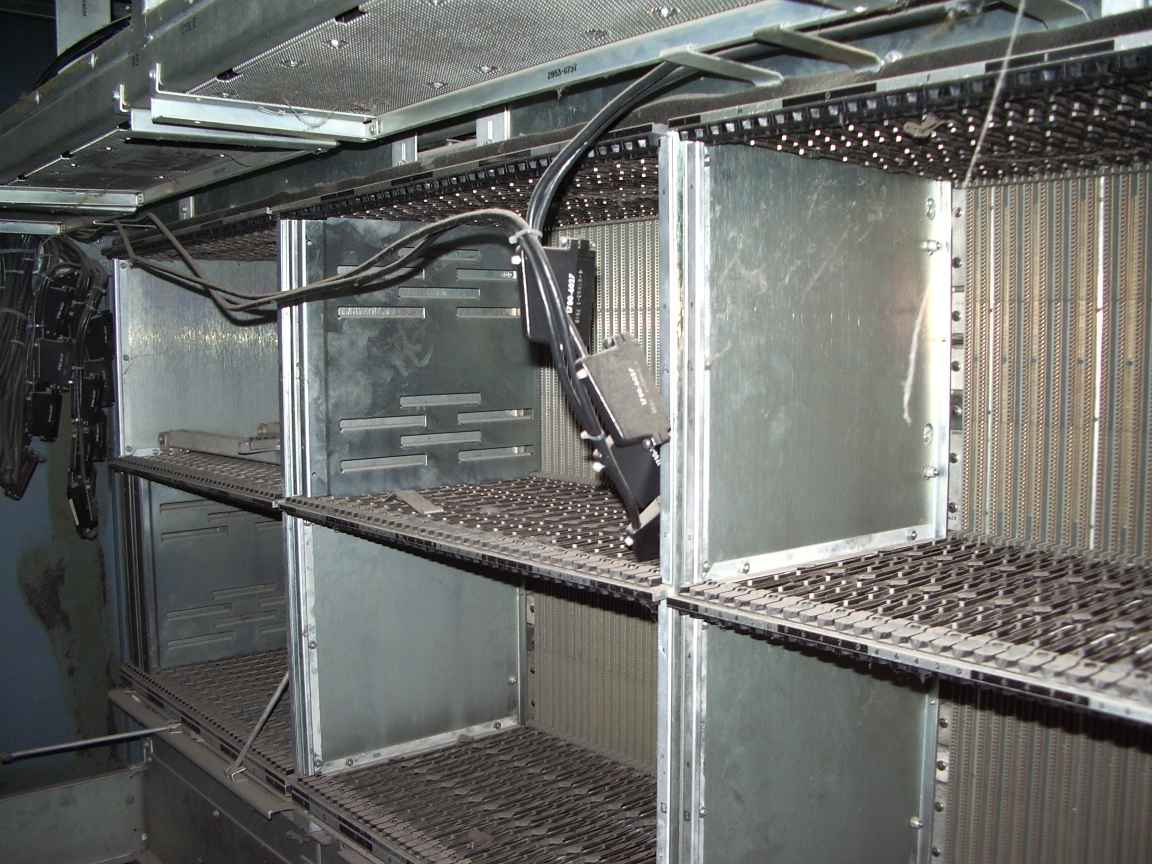
A sadly empty card cage
The completely wired wrapped cards, no two were alike. This was not a
machine for board jockeys.
Wire wraps were two deep and productions cards were wrapped by robot. |
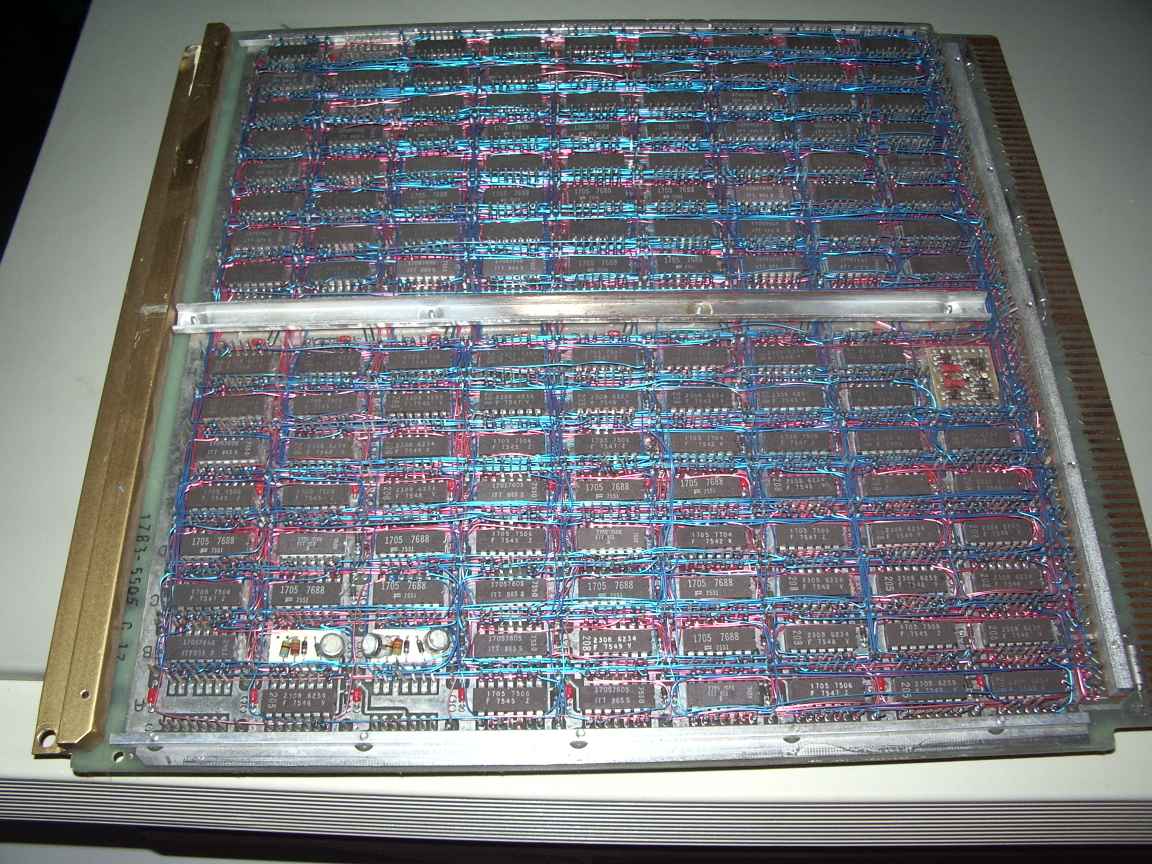 |
|
This board and its hundreds of companions was biult from a hybrid
mixture of CTuL logic
and TTL logic for more rarely used MSI functions. Chip makers were
Fairchild and ITT. CTuL chips were power hungry. They would overheat and destroy themselves in the obsence of flowing air. |
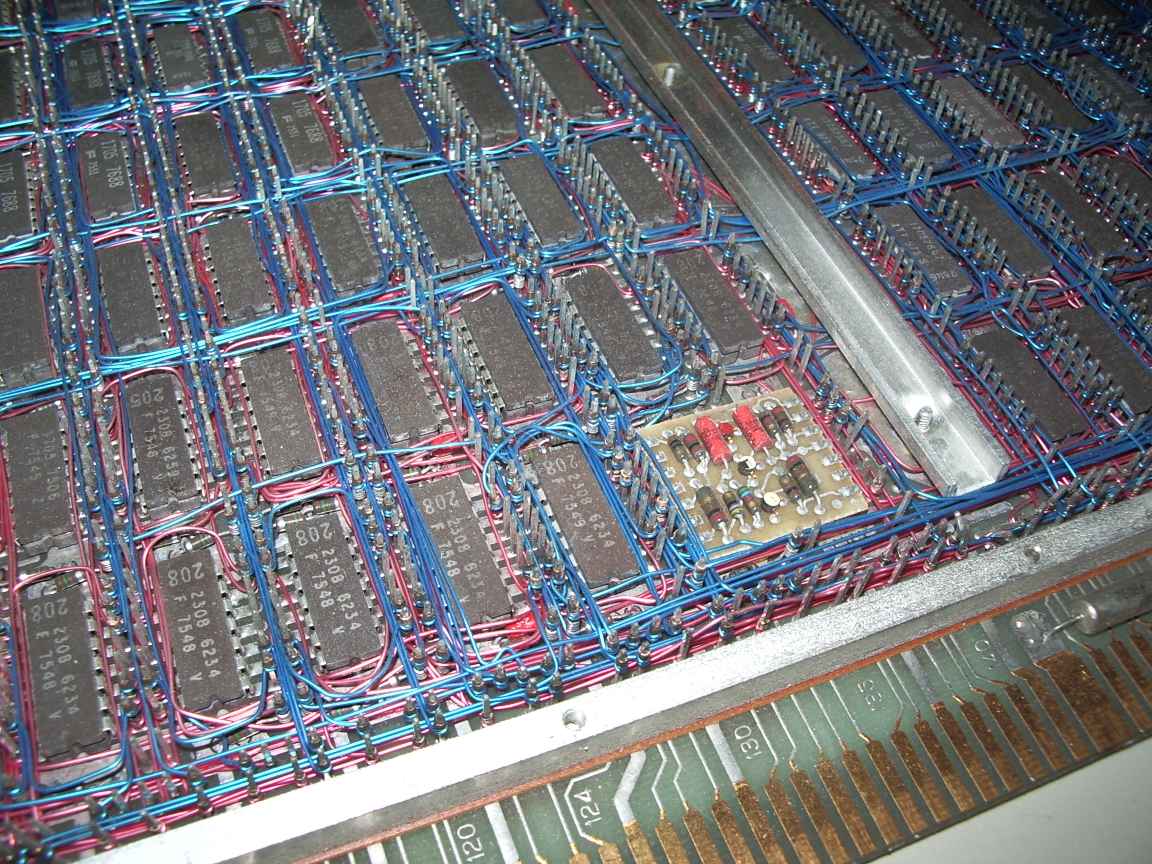 |
The above two images are
from one of
the hundreds of circuit cards from the Burroughs B7800 CPM and IOM
mainframes. The chip family is the little emulated and not
lamented CTuL family that was made on special order from Fairchild and
ITT. All the boards were totally wire wrapped with the ICs soldered in
place, the chips were never socketed. The wire wrap was two deep per
post. The close up shows a clock distribution amplifier, every card had
at least one of these. We had to perform chip level repairs on these
boards. There were no schematics. What we had we the so
called
LOCAL books (Logical and Chip Analysis) which had a typographical
tabular convention that specified the logic equations for the board and
the complete wire map in tabular form. From test vectors injected by
the B800 mainenance processor the machine and the board called be put
into a state one clock cycle before the error vector. We traced the
faulty logic state back from the front panel, to one or more cards and
finally to the chip or wired OR signal. Some horrible wire OR signals
had over one hundred terms and could take days of very
pernikity
probing and thinking. Intermittant faults were common. When working
this way with a suspect board out of the card cages on an extender we
would be exposed to the full blast of the underfloor cooling and this
was highly unpleaseant, the set point temperature was 12 degrees C.
Cooling failures were potentially diasterous and one of my
very
first projects was to construct an overtemperature detector and automatic
shutdown controller.
CTul was somewhat like ECL ( see
my ECL rant
) but yet completely unlike it. It was a strange RTL-like
logic
with open emitter output. It was incredibly power hungry, a
chip left powered up without a hurricanes' worth of cold air blasting
over it could get too hot to touch. I dont believe that anybody other
than Burroughs ever used this logic family. They choose to use this
logic family very early and only gave it up when the A10 series
mainframe was released make of TTL. The logic family was
quite
fast. The B7800 master clock ran at 8Mhz. I believe that the CTUL
logic family was also used by NASA on the Vehicle Flight Controller on
the Saturn V rocket.
There were only SSI functions available in the family, but it was sort
of TTL compatible and the B7800 used TTL gates for things like bipolar
memory. Logic supplies were 4.75 volts and negative 2Volts.
The
CTuL gates did not have gain, and that meant that after a logic signal
had propagated through 3 levels of logic a buffer or amplifier would be
required to regenerate the logic level.
CTuL first appeared in 1965 and the images below are from an ancient
Fairchild manual. It predates TTL by about 10 years. I suspect it was developed to get around Motorala ECL patents. |
|
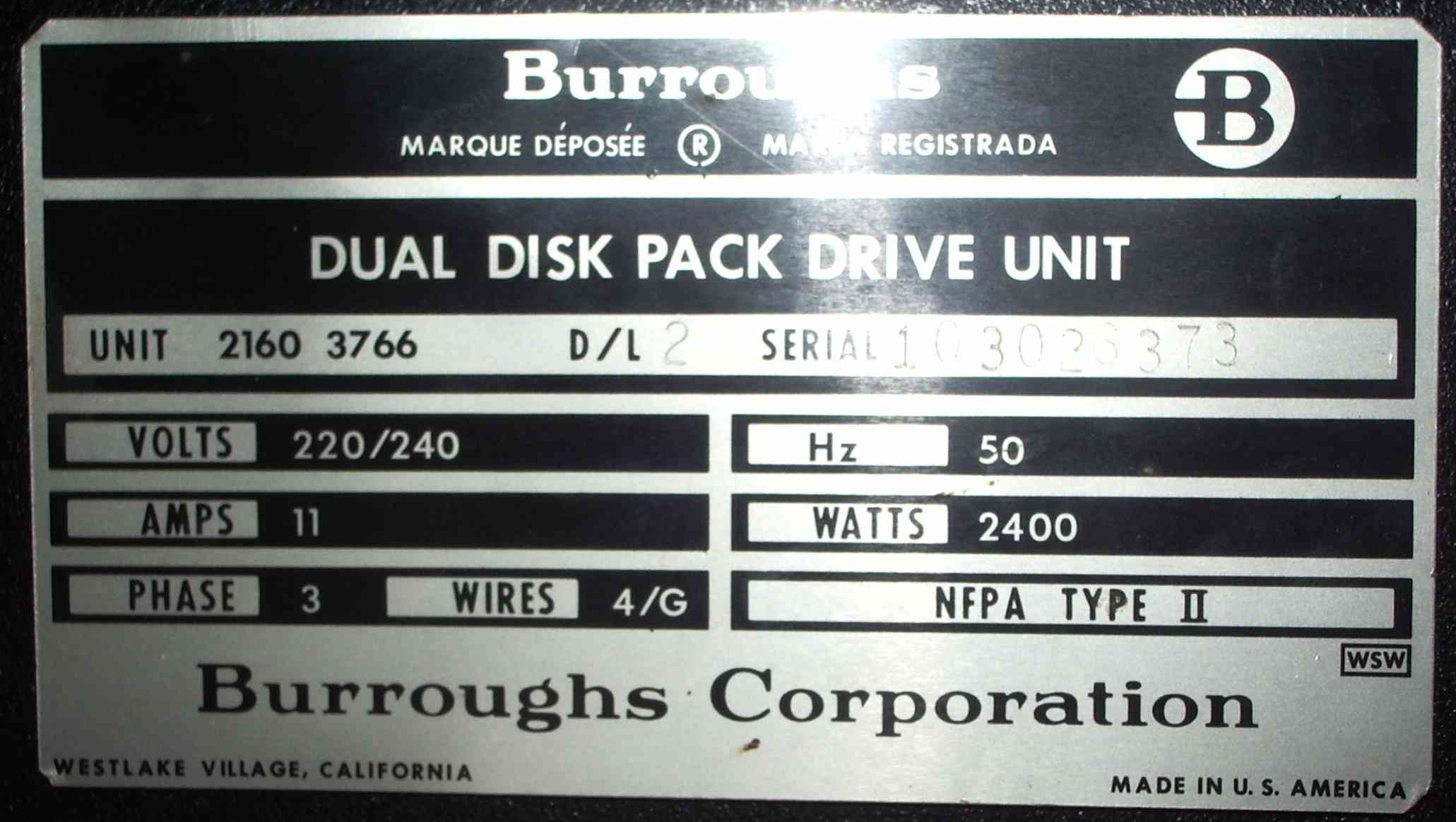
electrical compliance
plate from a
type 235 quad density disk pack drive unit. The power consumption was
no engineering overestimation it was quite real. Most of the
power consumed was utilized in spinning the 12 fourteen inch diameter
platters of the disk pack at mains synchronous speed, the power
consumed was mostly the induced drag in air. The air was given a
significant centrifugal acceleration and this facilitated both cooling
and cleaning the air gap space. The suction induced at the core of the
pack would help suck air through the absolute filter that required
changing every six months or so. This particular drive unit
had
170 Megabytes of formatted space.
A nd for old time sake,
here is the CANDE manual, but only on microfiche. No , you cannot read it, my scanner is not that good!
if
you zoom in deeply you might just be able to make out the famous
railroad diagrams that "explained" the sometimes bizarre syntax.
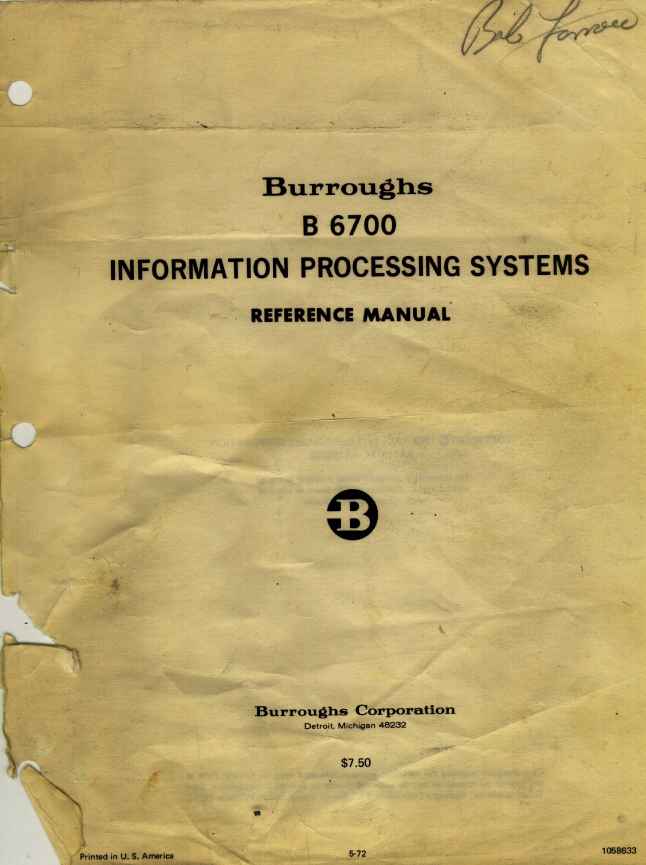 |
| Here is my complete scan of the B6700 systems architecture manual |
Here are some images of Burroughs places and people kindly sent to me by Mr M Morreal a former manager at
Burroughs. Here are some of the people behind the Burroughs Large Systems machines
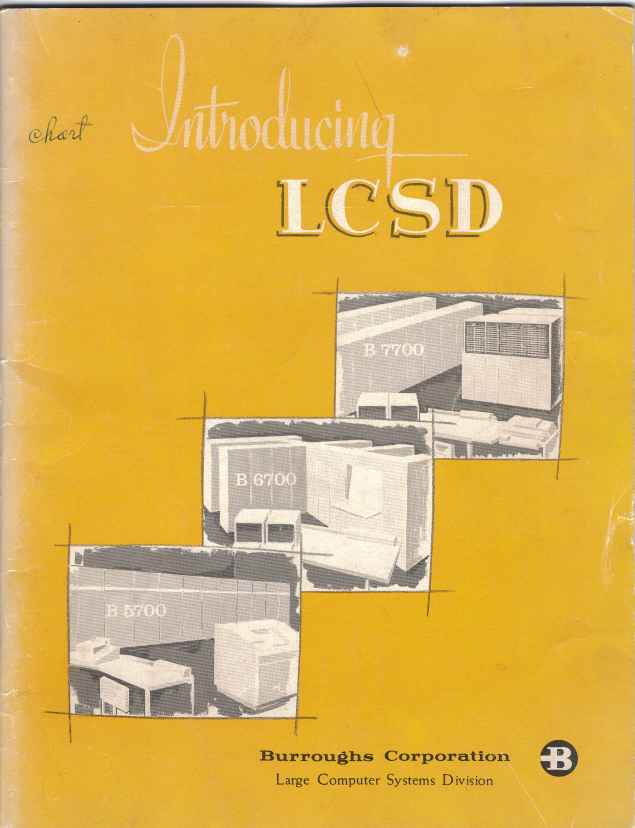 | 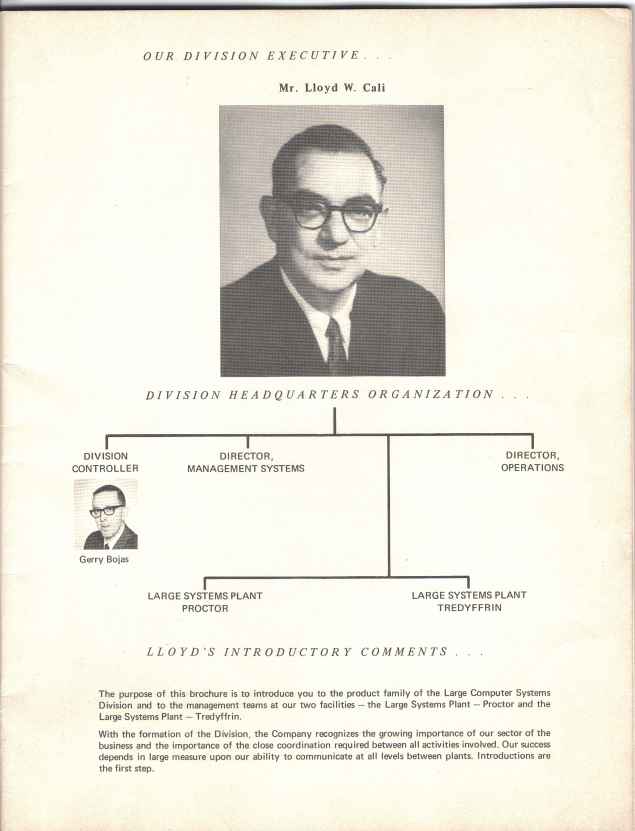 | 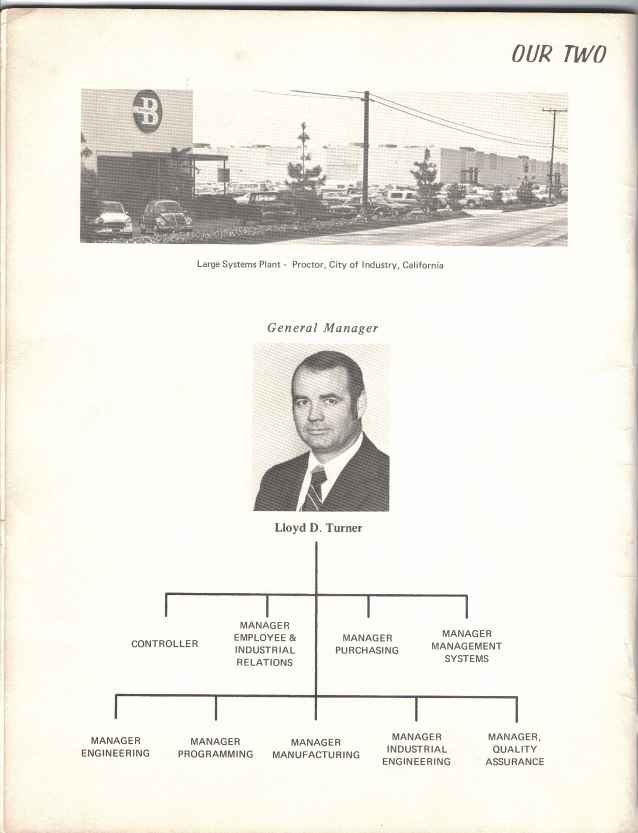 | 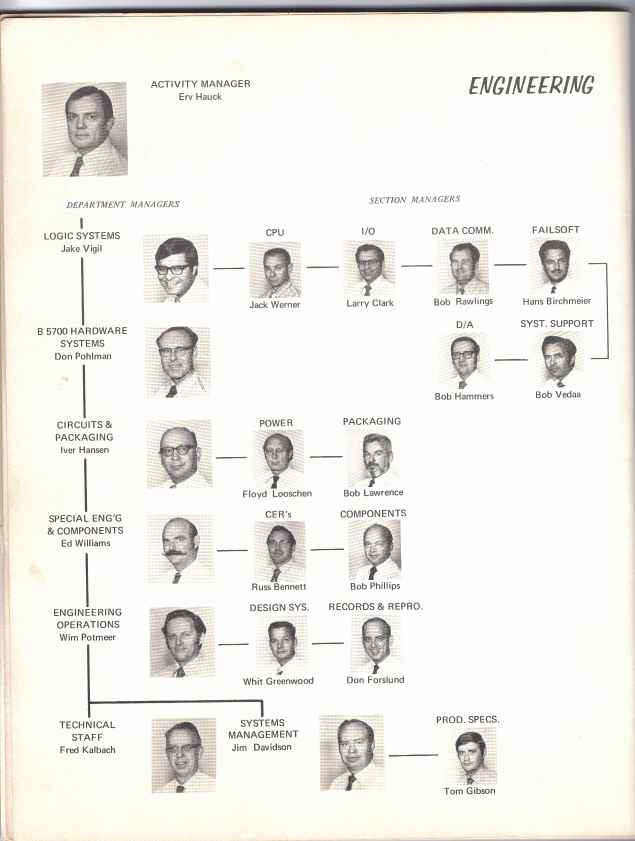 |
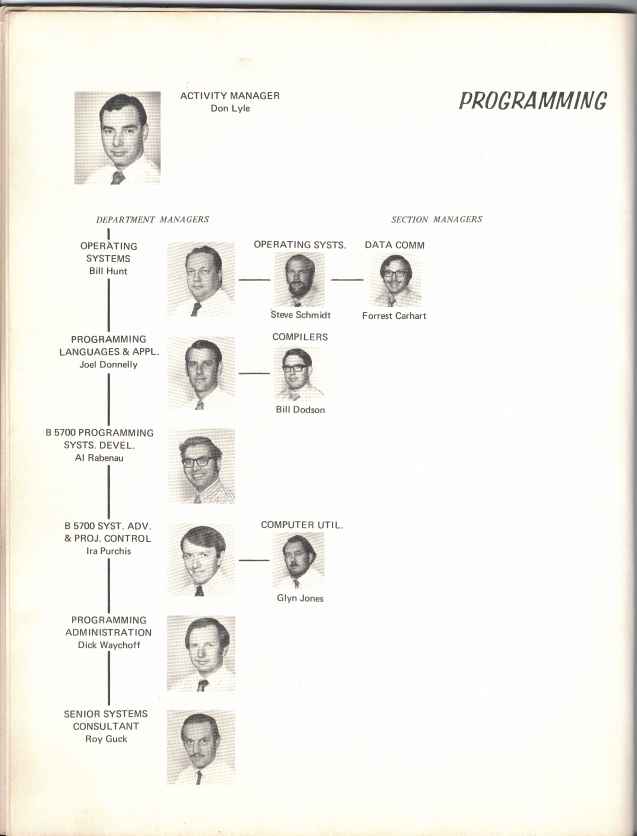 | 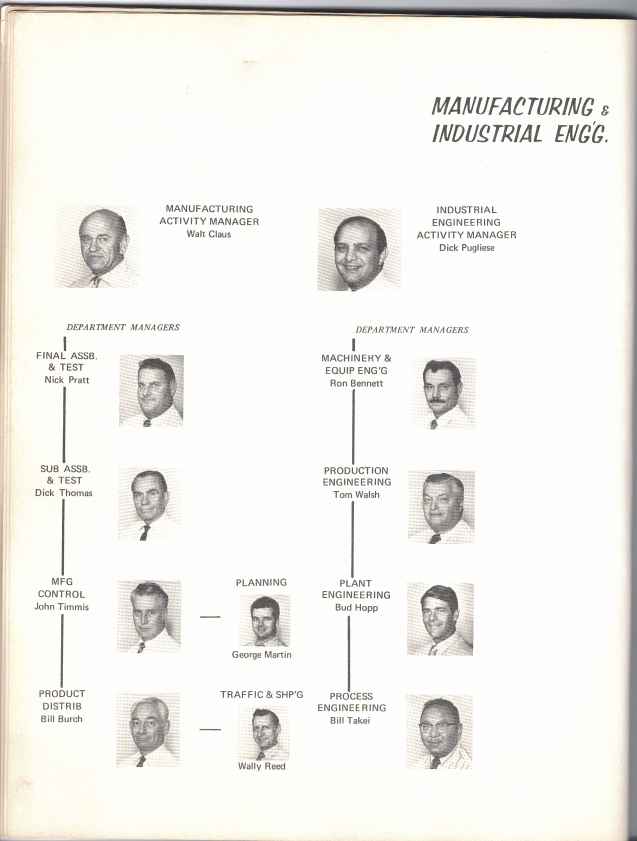 | 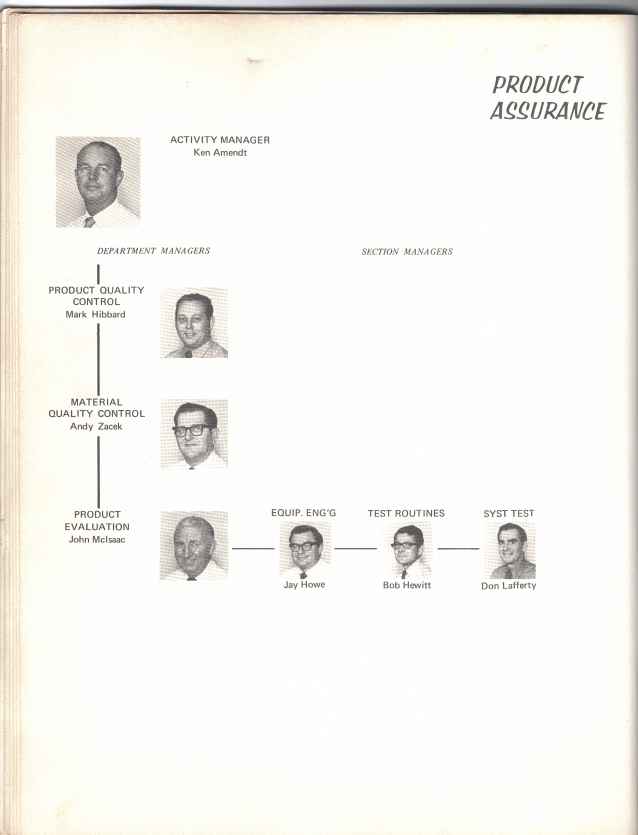 | 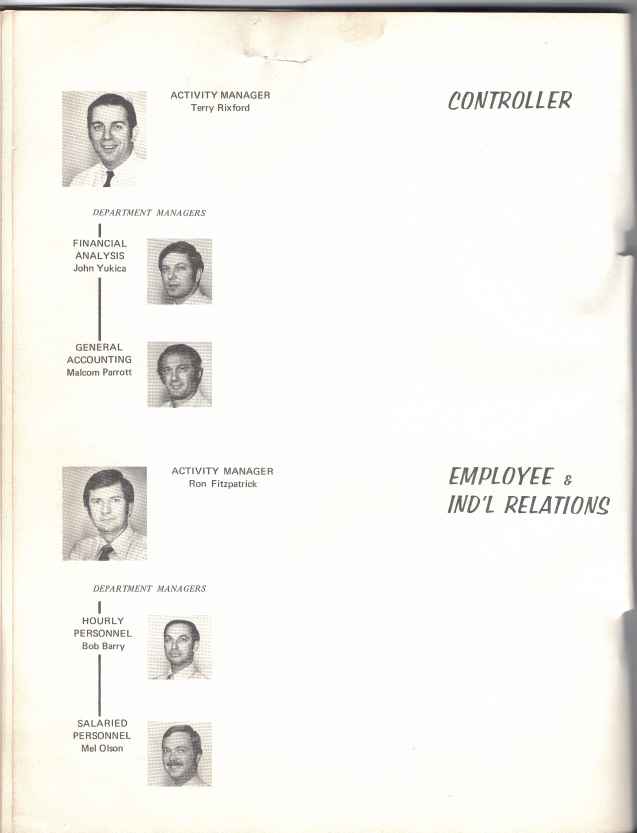 |
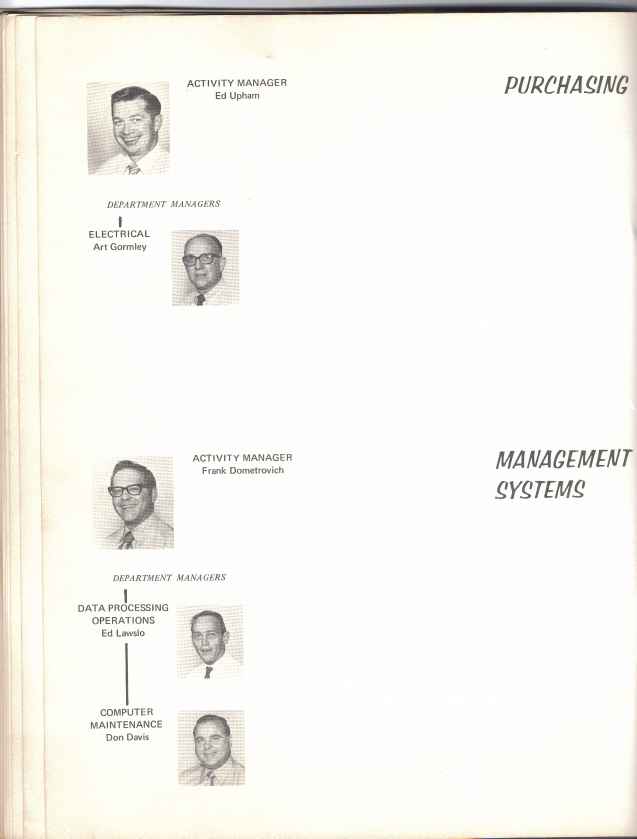 | 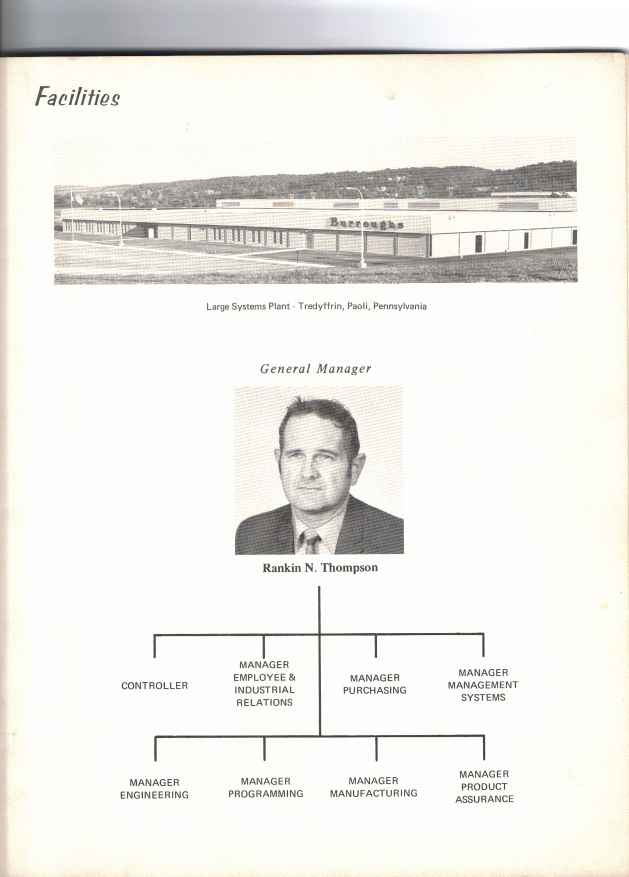 | 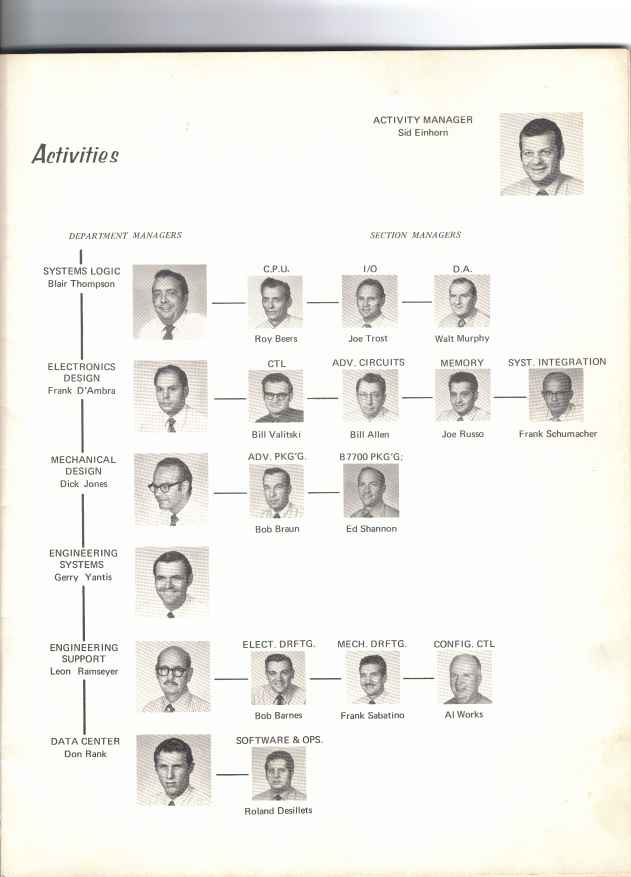 | 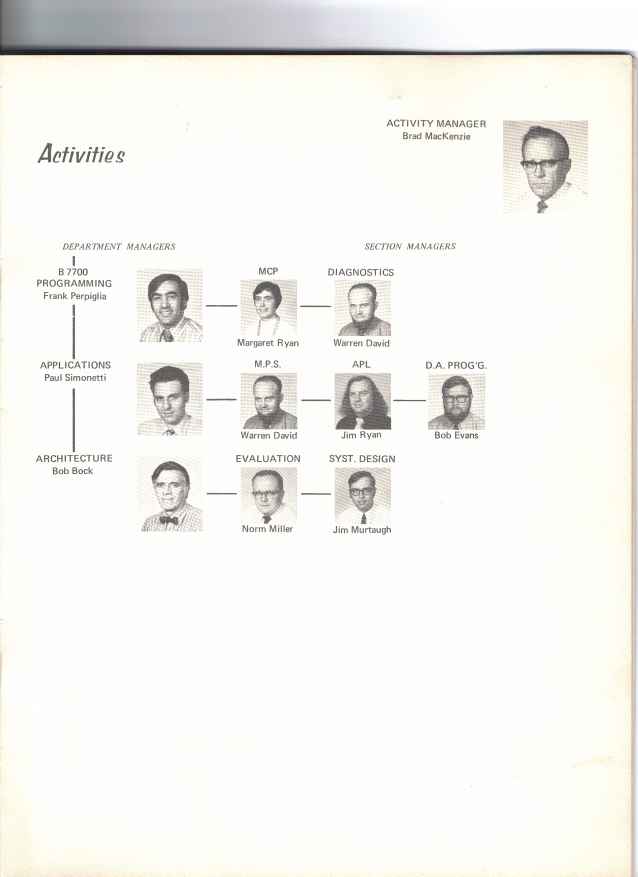 |
| Am image of the Treddyfrin plant | | |
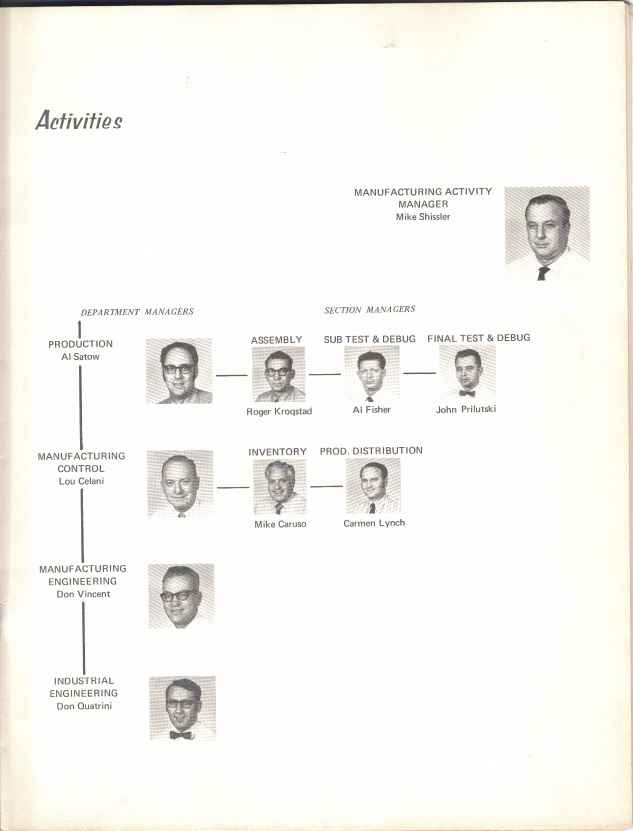 | 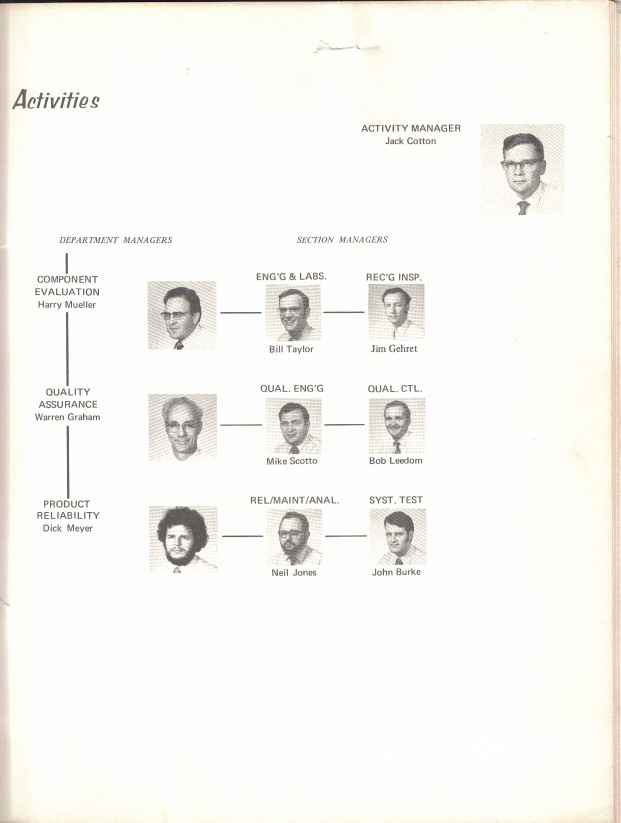 | 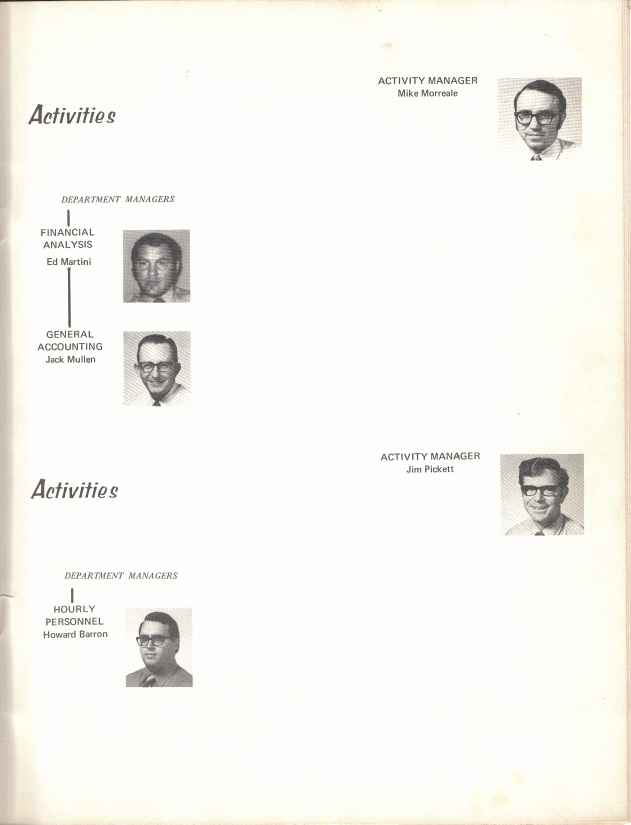 | 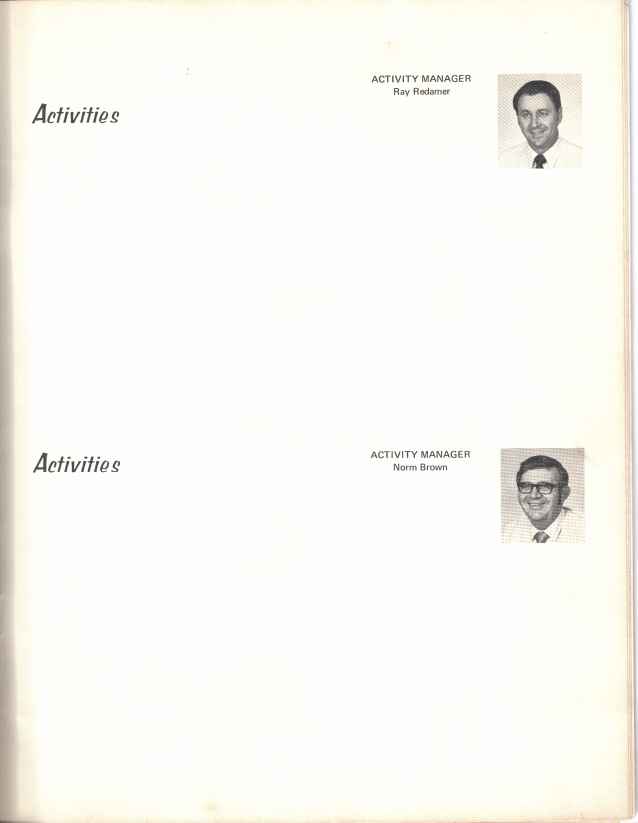 |
click them to download full res images
Now thats some real history. Dont forget to have a look at a complete edition of B-Line, and B-Line-2 the corporate journal from the mid sixties
| emails welcomed at |  |
my warm thanks to all that have written so far.
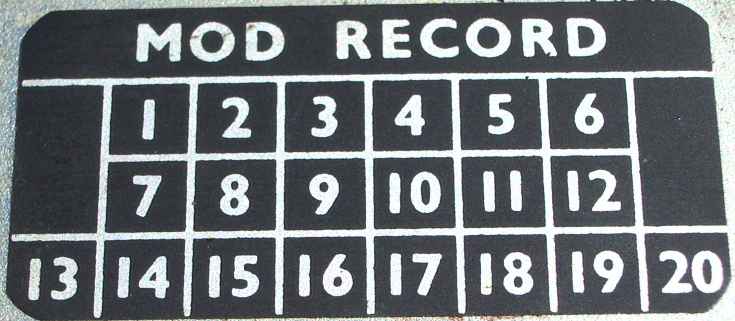
mod
record: Mon Sep 29 18:52:23 EST 2008 added partial scan of B6700
architecture manual, add link to the B-Line journal Fri
May 29 20:00:35 EST 2009 added image contribution from Mr M Morreal.
Fri Jun 5 19:05:39 EST 2009 added new link to scans of Bline2
Tue May 26 17:23:17 EST 2015 added Cliff Bellamy tribute.
































